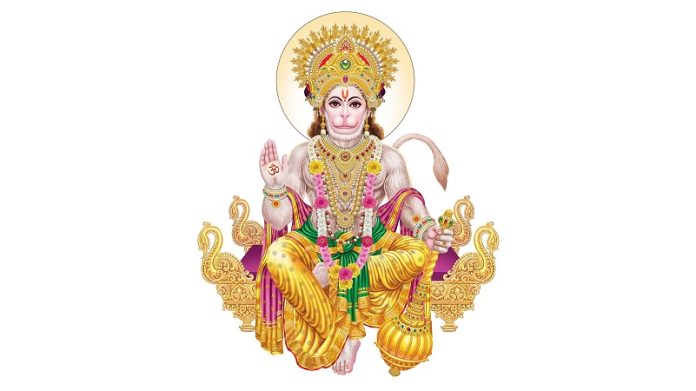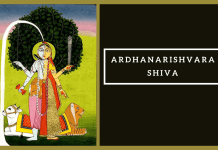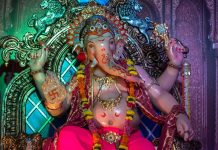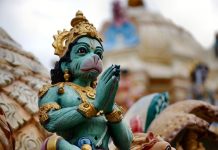Lord Hanuman, one of the most revered deities in Hindu mythology, holds a special place in the hearts of millions of devotees. His extraordinary strength, boundless devotion, and unwavering loyalty to Lord Rama make him an iconic figure in Hinduism. The origins of Lord Hanuman are shrouded in captivating myths and legends that reveal the divine nature of this beloved deity.
According to ancient Hindu scriptures, Hanuman is considered an incarnation (avatar) of Lord Shiva himself. The story of his birth begins with the celestial beings’ desire to participate in Lord Vishnu’s divine play on Earth. A group of celestial nymphs, known as Apsaras, wanted to be a part of the epic events unfolding during Lord Rama’s incarnation. They performed intense penance and sought the blessings of Lord Shiva to grant them this wish.
Pleased by their devotion, Lord Shiva agreed to fulfill their desire. He divided his essence into five parts and reassured the Apsaras that they would be born on Earth as vanaras (monkey-like beings) to play significant roles in Rama’s life. One of these divine sparks took the form of Hanuman, who was destined to become Lord Rama’s most ardent devotee and a pivotal figure in the battle against the demon king, Ravana.
Another popular legend narrates Hanuman’s miraculous birth. It is said that Lord Vayu, the Wind God, was deeply devoted to Lord Shiva and served as a crucial element in the universe’s balance. To ensure that the wind remained intact, other deities granted Lord Vayu the gift of immortality. As a result, Lord Vayu became an immortal force, essential for sustaining life on Earth.
One day, while Vayu was wandering through the heavens, he found a mystical fruit known as Sita Phal (Divine Fruit). He brought the fruit to Lord Shiva and Goddess Parvati as an offering. However, Lord Shiva, in his playful demeanor, decided to distribute the fruit among his family, which included Lord Vayu. Each member of the divine family consumed a part of the fruit.
Upon eating the fruit, Lord Vayu experienced a potent surge of divine energy, which resulted in a profound impact. A gust of wind swept through the universe, and moments later, an infant with extraordinary powers emerged from the wind. This child was none other than Hanuman, who embodied the combined blessings and energies of the celestial deities.
As he grew, Hanuman’s strength and wisdom became apparent, and he became a devoted disciple of Lord Rama. Throughout the Ramayana, Hanuman’s unwavering loyalty, his incredible feats of courage, and his boundless devotion to Lord Rama showcased his divine origins.
Hanuman’s devotion and love for Lord Rama are epitomized in his role during the search for Sita, his encounters with demons, and his instrumental role in the war against Ravana. His flying ability, attributed to his father, the Wind God, helped him traverse great distances and carry out tasks beyond ordinary mortals.
In conclusion, the mythological origins of Lord Hanuman are woven into the fabric of Hindu mythology. Whether as an incarnation of Lord Shiva or the divine offspring of Lord Vayu, Hanuman’s birth was nothing short of a celestial event. His divine nature, coupled with his loyalty and devotion, have made him an endearing and inspiring figure for millions of devotees across the world. Hanuman’s stories continue to captivate the hearts of people, and his legacy remains an integral part of the rich tapestry of Hindu mythology.

























































